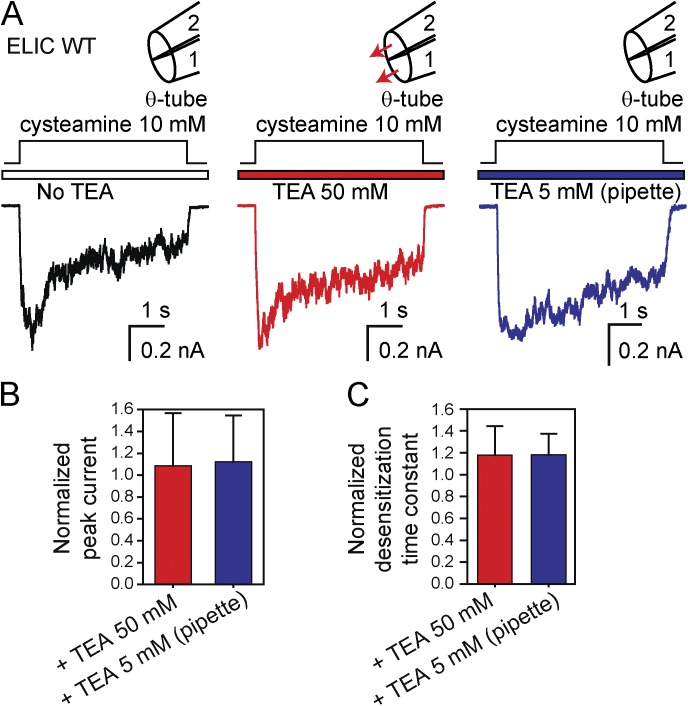Figure 5.
50 mM TEA+ fails to block ELIC. (A) Macroscopic current responses to 5-s pulses of 10 mM cysteamine recorded at –80 mV in the outside-out configuration. The responses were recorded without TEA+ in either barrel (left) or in the presence of 50 mM TEA+ flowing through both barrels of the theta-type perfusion tubing (middle). Because ELIC displayed marked rundown in outside-out patches, these traces were not recorded sequentially. Instead, individual patches of membrane were exposed to cysteamine pulses either in the absence or the presence of TEA+. In separate recordings, TEA+ was also applied to the intracellular side of outside-out patches (right). The solutions flowing through the two barrels of the perfusion tubing were (in mM) 142 KCl, 5.4 NaCl, 1.8 CaCl2, 1.7 MgCl2, and 10 HEPES/KOH, pH 7.4 with or without cysteamine and with or without TEA+. In the schematic representations of the theta-tubing perfusion, arrows indicate the application of external TEA+. (B) Peak-current amplitudes recorded in response to the application of cysteamine in the presence of external 50 mM TEA+ or internal 5 mM TEA+ normalized to the peak value observed in the absence of external or internal TEA+. (C) Time constants of desensitization during the application of cysteamine in the presence of external 50 mM TEA+ or internal 5 mM TEA+ normalized to the time constant fitted to TEA+-free recordings. The values plotted in B and C are means obtained from 8 (external 50 mM TEA+) and 5 (internal 5 mM TEA+) patches; error bars are the corresponding standard errors. Note the lack of effect of millimolar TEA+ applied to either side of the membrane.

